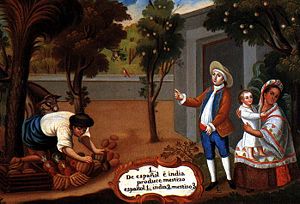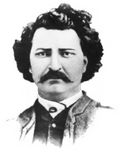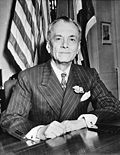Mestizo
2008/9 Schools Wikipedia Selection. Related subjects: Peoples
| Mestizo |
|---|
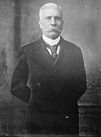 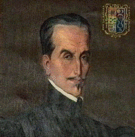 |
| Notable Mestizos: Porfirio Díaz, Inca Garcilaso de la Vega |
| Total population |
|
Official population numbers are unknown. |
| Regions with significant populations |
| Latin America |
| Languages |
| Predominantly Spanish, (with a minority of other languages), while Mestiço speaks Portuguese, and Métis speak French; English in the United States. |
| Religion |
| Christianity (Predominantly Roman Catholic, with a minority of Protestant); and other religions. |
| Related ethnic groups |
| European (mostly Spaniards, Portuguese, French and Italian); and Amerindian people. |
Mestizo is a Spanish term that was formerly used in the Spanish Empire and continues to be used today in Latin America, Guam, and the Philippines to refer to people of mixed European (most often Spanish) and local indigenous ancestry of each of the former colonies. The term is most often associated with those people of the particular racial mixture of European and Amerindian who inhabit and conform much of the population of Latin America.
The word mestizo originated from the Romance language / Latin word "Mixticius", meaning "mixed". In the Portuguese and French languages, the words "Mestiço" and "Métis" were also used in the Portuguese and French Empire to identify individuals of mixed European and Amerindian ancestry.
Americas
Spanish-speaking Latin America
Under the caste system of Spanish America and Spain, the term originally applied to the children resulting from the union of one European and one Amerindian parent or the children of two mestizo parents. During this era, a myriad of other terms including " Castizo" (3/4 European and 1/4 Amerindian), Cuarterón de Indio, and " Cholo" (1/4 European and 3/4 Amerindian), were in use to denote other individuals of European-Amerindian ancestry in ratios smaller or greater than the 50:50 of mestizos.
Mestizos form the majority of the population in most of Latin America; however, it is difficult to know with any reasonable precision except by genetic studies how extensive the Mestizo population is. Various censuses since Spanish colonial days tracked the race of inhabitants of the Latin American countries, but even these statistics are only generally indicative since race was closely tied to official legal status (the Spanish caste system) and language use. Wealthy people paid to change or obscure their actual ancestry. Many indigenous people were classified as mestizo if they spoke Spanish or lived as Mestizos. In general, the countries believed to have a majority mestizo population today are Belize, Colombia, Ecuador, El Salvador, Honduras, Mexico, Nicaragua, Panama, Guatemala, and Paraguay. In some countries like Chile and Costa Rica, the majority of the population belongs to a group referred to as "White and Mestizo" where both groups are not easily separable. In Bolivia and Peru, mestizos form the second largest group. In Venezuela, they are nearly half the population and the largest group.
In Mexico, the degree of admixture varies with region, although population mobility in recent decades has changed this somewhat. Generally, the degree of indigenous ancestry among mestizos increases from north to south. African ancestry is greater in the Gulf coast region, especially in the vicinity of Vera Cruz, and in the larger cities. Since the mid-nineteenth century, the African component has mostly been incorporated into the general mestizo population.
In Puerto Rico, genetic testing proved the largest components are Taino, European, and the smallest being African. The Taino element is considered to be the foundation of Puerto Rico's ancestral society. Taina women carried the children of Spanish, and African men. Genetic DNA is slanted towards Taino as being the largest component of the mtDNA, while yDNA testing shows a substantial contribution from North Africa, and Southern Spain. In the Dominican Republic, mestizos of part Amerindian ancestry form a small minority of the population ranging from 10% to 20%. Almost all of the population in those countries are composed of White, African, and Mulato (1/2 European and 1/2 African) ancestry who form the majority of the population. In Argentina and Uruguay, the mestizo population form a small minority of 8% to 3% of the population.
Noted mestizos migrating to Europe
Martín Cortés, son of the Spanish Conquistador Hernán Cortés and of the Náhuatl- Maya indigenous Mexican interpreter Malinche, was the first mestizo to arrive in Spain, though he did so against his will after being exiled in punishment for leading a rebellion.
The first mestizos of whom there is verified evidence of willingly having set foot on European soil are the grandchildren of Moctezuma II, Aztec emperor of Mexico, whose royal descent the Spanish crown acknowledged. Of this family, the most publicized descendants are the Acosta family and the Spanish counts Miravalle, in Andalucía, Spain, who in 2003 demanded that Mexico recommence payment of the so called Moctezuma pensions the government cancelled in 1934. The interest alone of such pensions is said to be enough for every single one of Moctezuma's modern descendants to live comfortable lives.
From Peru also arrived the mestizo historian known as Inca Garcilaso de la Vega, son of Spanish Conquistador Sebastián Garcilaso de la Vega and of the Inca princess Isabel Chimpo Oclloun. He lived in the town of Montilla, in Andalucía, where he died in 1616.
Starting from the early 1970s and throughout all of the 1980s, Europe saw the arrival of thousands of Chileans, both mestizos and whites, seeking political refuge during the dictatorial government of Augusto Pinochet. Today, there is a growing number of mestizo immigrants in Western Europe, primarily from Ecuador and Colombia.
Brazil
In Brazil, the word "Mestiço" is used to describe individuals born from any mixture of different ethnicities. Individuals that fit the specific case of having Portuguese and Amerindian parents are commonly known as " Caboclo" or, more commonly in the past, " Mameluco". Individuals of white and black ancestry are described as " Mulatto". "Cafuzos" (known as " Zambo" in the English language) are the production of Amerindian, and African ancestors.
Canada
In Canada, the "Métis" are regarded as an independent ethnic group. This community of descent consists of individuals descended from marriages of First Nation women, specifically Cree, Ojibway, and Saulteaux with French Canadian and British employees of the Hudson's Bay Company. Their history dates to the mid 17th century, and they have been recognized as a people since the early 18th century.
Their territory roughly includes the three Prairie Provinces ( Manitoba, Alberta and Saskatchewan), parts of Ontario, British Columbia and the Northwest Territories, as well as parts of the northern United States (including North Dakota and Montana).
Traditionally, the Métis spoke a mixed language called Michif (with various regional dialects). Michif (a phonetic spelling of the Métis pronunciation of "Métif", a variant of Métis) is also used as the name of the Métis people. The name is most commonly applied to descendants of communities in what is now southern Manitoba. The name is also applied to the descendants of similar communities in what are now Ontario, Quebec, Labrador, and the Northwest Territories, although these groups' histories are different from that of the western Métis. In Northern Manitoba Irish descendents soke Bungee a combination of Galic, Cree, and Ojibwe. Bungee is now an exstinct language.
Estimates of the number of Métis vary from 300,000 to 700,000 or more. In September 2002, the Métis people adopted a national definition of Métis for citizenship within the "Métis Nation." Based on this definition, it is estimated that there are 350,000 to 400,000 Métis Nation citizens in Canada, although many Métis classify anyone as Métis that can prove that an ancestor applied for money scrip or land scrip as part of nineteenth-century treaties with the Canadian government. However, Labrador, Quebec, and even some Acadian Metis communities are not accepted by the Metis National Council and are represented nationally by the "Congress of Aboriginal Peoples."
The Métis are not recognized as a First Nation by the Canadian government and do not receive the benefits granted to First Nation peoples. However, the 1982 amendments to the Canadian constitution recognize the Métis as an Aboriginal people and have enabled individual Métis to sue successfully for recognition of their traditional rights such as rights to hunt and trap. In 2003, a court ruling in Ontario found that the Métis deserve the same rights as other aboriginal communities in Canada.
The United States
In the United States, the term "Multiracial" is used to indentify individuals of mixed racial heritages.
Nearly half (48%) of the 35 million Hispanic and Latino Americans counted in the Federal 2000 Census self-identified as "White", and another 3/7 (42%) as "Other". Multiracials came in at 6%. There are many multiracial people of different ethnicities living in the United States. An explorer by the name of Jean Baptiste Charbonneau was perhaps the most notable person of mixed ancestry in the region. His father, Toussaint Charbonneau, was a French Canadian interpreter, and his mother Sacagawea was a Native American Shoshone guide of the Lewis and Clark Expedition. Jean Baptiste can be found depicted on the United States dollar coin along with his mother, Sacagawea. Prior to 1848 it was unclear where the Canada-US border lay, and later still before it was enforced. Many Metis lived in Montana and North Dakota.
It should be noted that the word "Mestizo" is a term used in regards to mixed–race Hispanic or Latino individuals. The word is not used among the mixed–race descendants of the North American Indian tribes, or in the United States cultural environment. The old English language cognate of mestizo is " Mestee", a word originating from the Middle French term "Mestis", which is translated to Métis in the modern French language. It was widely used by people of mixed White and Native American ancestry before the American Civil War in the 19th century. After the Civil War, the One-drop rule started to include Black people, and the word fell into disuse — except for members of the old tri–racial ethnic groups such as Melungeons, Brass Ankles, Chestnut Ridge people (or Mayles), and Redbones.
Asia-Pacific
Philippines
In the former Spanish colony of the Philippines, the term "Mestizo" originally referred to those of mixed indigenous and Spanish ancestry; however, the term soon became generic and synonymous for "mixed race.", referring to all Filipinos of mixed indigenous and other ancestry. A recent genetic study by Stanford University indicates that less than 3.6% of the population have European ancestries from both Spanish and United States colonization.
Modern day Filipino mestizos include Filipinos of Chinese, American, Hispanic, Arab and Indian ancestries. The correct term denoting Filipinos of Chinese ancestry would be " Sangley." The term used for people who possess Chinese, Spanish, and Filipino ancestries are called " Tornatras."
East Timor, Macau, Goa, and Sri Lanka
In the former Portuguese colony of East Timor, Macau, Goa, and Sri Lanka, the term "Mestiço" is applied to those of mixed Asian people (including Austronesian, Chinese, Asian Indian, Sri Lankan); with Portuguese ancestry. They currently form a small minority of the population in those countries. Prominent mestiços in East Timor include the first President Xanana Gusmão as well as the second President José Ramos-Horta.
Guam and Northern Mariana Islands
In the former Spanish colonies of Guam and Northern Mariana Islands, the term "Mestizo" was formerly used to identify people of mixed Pacific Islander and Spanish ancestry; however, as the United States gained control of these islands after the Spanish American War in 1898, the term "Multiracial" became the contemporary term used to designate individuals of mixed indigenous and American or European descent. They currently form a small minority of the population.
